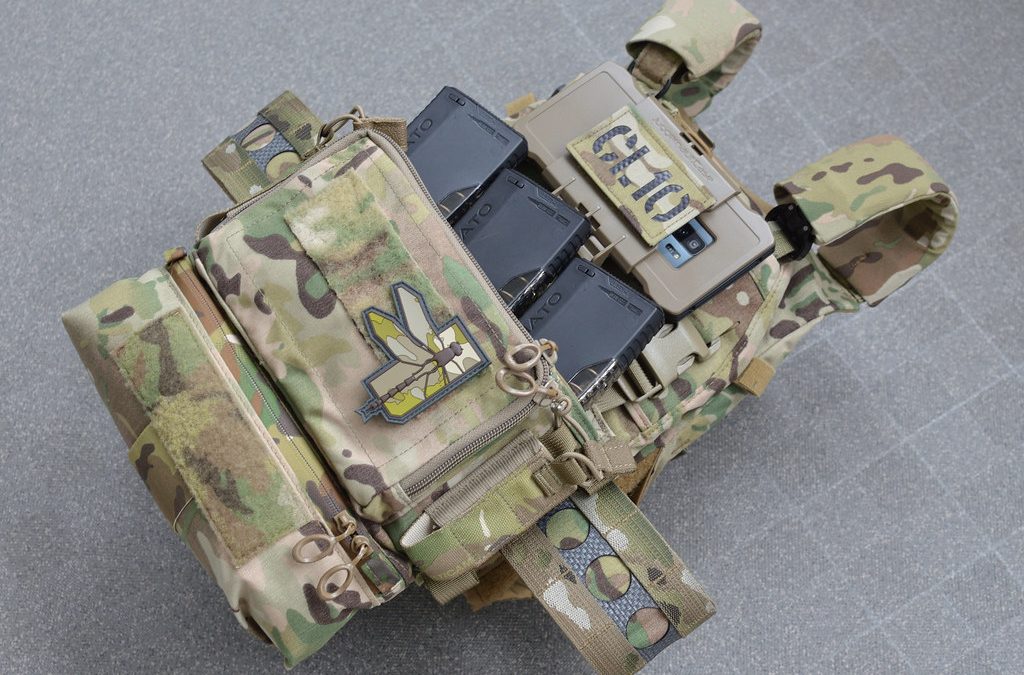Preparedness isn’t paranoia, it’s patriotism.
The Modern Militiaman: Why Your Loadout Starts With a Rifle, and Armor
From Lexington Green, to the rooftops of Koreatown, Americans have always answered chaos not with helplessness, but with resolve. Back then, they called them minutemen. Today, we call it being squared away.
In 2025, the symbol of that readiness isn’t just a rifle anymore, it’s also body armor.
A plate carrier isn’t about playing soldier. You may feel that way at first, but it’s about taking responsibility for your life, your family, and your community. It’s about not outsourcing safety, because in those first violent moments, no one’s coming to save you. That’s something that most combat veterans can attest to, but it’s less apparent to the everyday civilian. The difference between “hunkered down and helpless” versus “stand and deliver” might just come down to 6 pounds of Kevlar and ceramic.
Types of Plate Carriers: From Slick to Combat-Ready
Plate carriers today run the full spectrum from minimalist to mission-ready. Here’s a basic lay of the land:
- Slick Carriers
- Use: Discreet protection under outerwear
- Example: Civil unrest, low-vis, emergency egress, plainclothes security
- Pros: Lightweight, minimal or no printing, easier to conceal
- Cons: Limited load-bearing, not ideal for extended ops, very few mounting options (if any)
2. Minimalist Carriers
- Use: High mobility, quick don/doff, training, personal defense
- Pros: Comfortable, modular, typically lighter
- Cons: Limited real estate for pouches/gear
3. Full Loadout/Combat Carriers
- Use: Tactical response, home defense loadouts, ranch security, SHTF
- Pros: MOLLE-compatible, high durability, built for sustained action
- Cons: Bulkier, heavier, hotter to wear
Each setup has a time and place. What matters most, and I cannot stress this enough, is having something on hand, because that thin line of nylon and ceramic can turn fatal trauma into bruised ribs and a second chance.
Understanding Plates: Steel vs Ceramic vs UHMWPE
Not all armor is created equal. Here’s what the everyman needs to know:
Steel Plates
- Pros: Affordable
- Cons: HEAVY spall risk (fragments on impact), potential over-penetration hazards
- Best for: Budget minded folks who understand the trade offs
Ceramic Plates (Level III+ or IV)
- Pros: Lighter than steel, excellent stopping power, military standard
- Cons: More fragile (big drops can crack them), more expensive
- Best for: People prioritizing weight, comfort, and ballistic efficiency, this is what I would always recommend
UHMWPE (Ultra High Molecular Weight Polyethylene)
- Pros: Extremely light, float in water, no spalling
- Cons: Expensive, limited heat resistance
- Best for: Maritime, long duration wear, comfort-focused individuals
Important Note: Armor ratings (NIJ Level III, III+, IV) aren’t just jargon, they indicate what your gear will stop. Rifle rounds = Level III and up. Don’t let a cool looking vest or plate fool you into a false sense of security without rifle rated protection.
The Moral Case for Armor: Why You Shouldn’t Wait
Body armor truly isn’t about being paranoid, or being some crazed prepper in the woods. It’s about accepting reality, seriously.
The American dream is beautiful. It’s why I’m so proud to live in this amazing country…but it’s fragile. Hurricanes, wildfires, blackouts. Civil unrest lies just below the surface, waiting to rear its head. One look at the news, and it’s clear, in 2025, normal can be one bad day away from being gone.
You don’t wear a seatbelt because you want to crash, or carry a tourniquet because you’re planning on bleeding. You wear armor for the same reason all of us at SOFREP and Loadout did, to go home to your family after a fight.
It’s not the government’s job to protect you in those first few minutes, that’s on YOU.
The Minuteman Ethos Lives On
In 1775, the average American wasn’t issued any gear or fancy materials. He brought his own, stood on his farm, and held the line with what he had. That tradition has not faded, but rather, evolved into a much larger community these days. In a nation founded on independence and self-reliance, plate carriers are just the modern extension of a very old belief: Freedom is worth protecting, your life is worth defending, and preparedness is never wasted.
You don’t need to cosplay a commando or an operator, but if you believe in liberty, keeping your peace when peace is threatened, and in defending the lives of yourself and your loved ones, you need armor.
Not tomorrow, not after you saved up for the latest Gucci setup that you saw on Instagram, but NOW.
Something is better than nothing, and a $150 steel plate rig beats an empty promise every single time.
Never ever let the worst day find you unready.
Read the full article here


